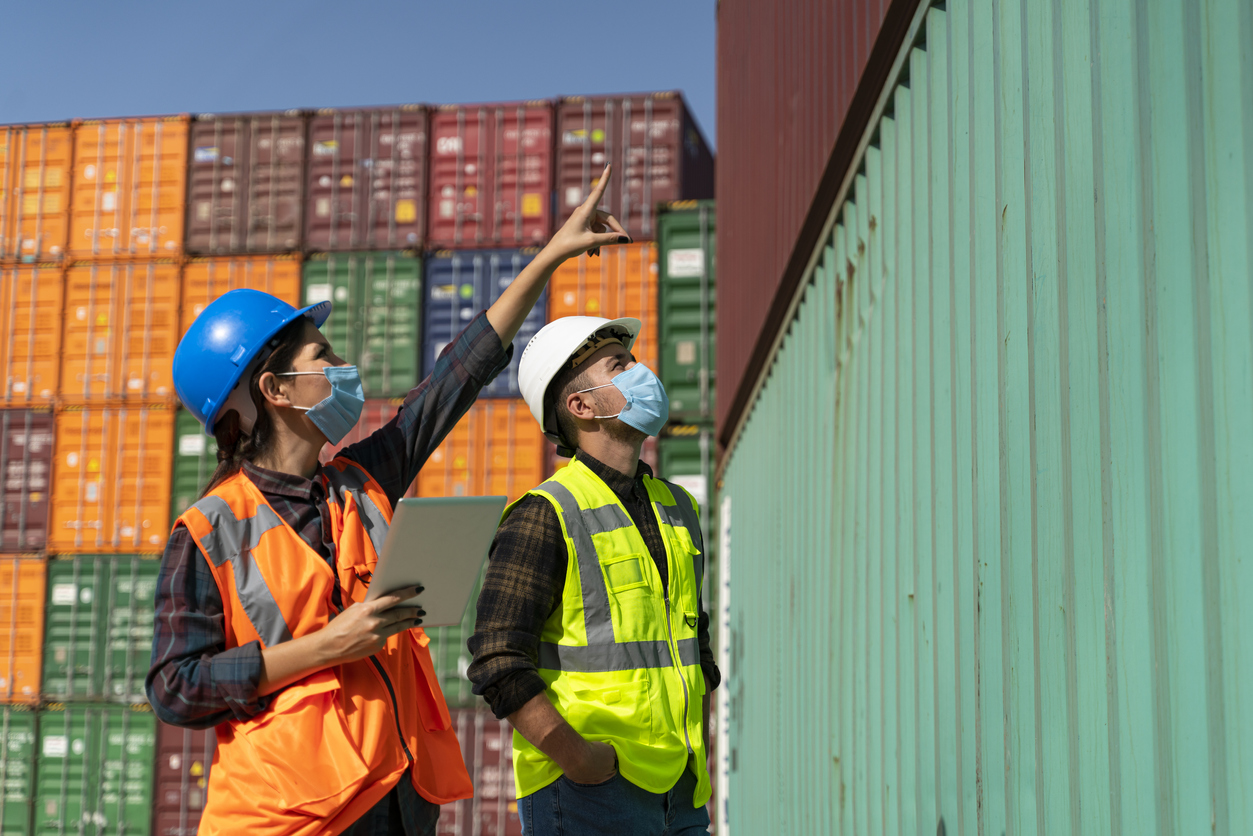As infections among Southern California dockworkers rise, the Covid-19 Omicron variant is impeding efforts to clear a backlog of about 100 container ships at the nation’s busiest port complex.
According to the Pacific Maritime Association, approximately 800 dockworkers—roughly one-tenth of the daily workforce at the ports of Los Angeles and Long Beach—were unavailable for Covid-related reasons as of Monday. Workers who tested positive for the virus, were quarantined or awaiting test results, or felt ill were among those who were absent.
The association, which secures labor for West Coast terminal operators, said the number of daily worker infections has risen rapidly in recent weeks, from a few cases a day to dozens, and then to around 150 a day last week.
Due to the shortfall, two container ships at the port complex received fewer dockworkers than requested on Monday, and 13 ships received no requested workers to load or unload cargo, effectively halting operations. According to the Marine Exchange of Southern California, which tracks ship movements in the area, 102 container ships waited for a berth at the port complex on the same day.
Hundreds of ships have waited weeks or months to unload cargo at the ports of Los Angeles and Long Beach due to a surge in imports that has overwhelmed logistics operations that deliver goods to US markets. In late November, the backlog reached 100 ships, and on New Year’s Day, it reached a record 106 vessels. Prior to the pandemic, it was unusual to have more than one ship waiting for a berth.
The rise in coronavirus infections, according to Alan McCorkle, CEO of Yusen Terminals LLC at the Port of Los Angeles, has extended a worker shortage that began over the Christmas and New Year holidays, reducing productivity at his terminal by about 20%. “It’ll just prolong the catch-up,” he said.
Dockworkers helped move record cargo volumes last year and, according to Frank Ponce De Leon, an official with the International Longshore and Warehouse Union, which represents West Coast port workers, are just as susceptible to Covid infections as other workers. Los Angeles County, where many port workers live, set a record with 200,000 positive coronavirus cases in the week ending Jan. 8.
Labor shortages in Southern California are occurring as a result of an increase in Covid-19 cases, which is slowing production at US factories and closing factories and clogging ports in China. According to a report released Tuesday by the Danish marine consulting firm Sea-Intelligence ApS, congestion and bottlenecks are worsening at ports in the United States and Europe.
The Southern California port complex is the primary ocean gateway for Asian imports into the United States, handling approximately 40% of containerized cargo. Last year, the ports struggled to handle record import volumes, which increased by about 20% compared to pre-Covid levels in 2019 as businesses rushed to replenish inventories and Americans shifted their pandemic-era spending from services to goods.
Last year, the Biden administration took steps to reduce the backlog, including unsuccessful efforts to compel Southern California terminals to switch to 24-hour operations.
Despite the increase in worker infections, Port of Long Beach Deputy Executive Director Noel Hacegaba stated in a statement that the port’s terminals remain open and offer some extended hours. The Pacific Maritime Association was contacted by the Port of Los Angeles about labor shortages.
The association’s chief executive, Jim McKenna, said terminals might be able to catch up on some of the work backlog if factories in Asia shut down for the Lunar New Year, which begins in a few weeks. However, he cautioned that the majority of his members, which include the world’s largest ocean carriers, expect the cargo surge to last at least another six months, if not until the end of 2022.














